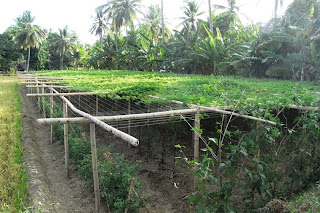A comparison of organic and conventional farming
The Council for Agricultural Science and Technology (CAST) in the USA, assembled in 1980 a high-powered Task Force composed of 24 scientists (chaired by S.R. Aldrich) with expertise in agricultural economics, agronomy, animal science, dairy science, entomology, food science, horticulture, soil science, veterinary medicine and others to look into the similarities and differences between organic and conventional farming. The Task Force report, which remains very relevant to the current debate surrounding organic and conventional agriculture, was officially published as CAST Report No. 84 "Organic and Conventional Farming Compared" in October 1980.

Some of the interesting highlights of the report are:
1. Conventional and organic farming have much in common. They differ principally in the use of modern chemical technology. Conventional farmers use commercial inputs (fertilizers, pesticides, animal feed additives) to increase productivity while organic farmers prefer to use natural resources.
2.Both conventional and organic farmers use various mechanical, biological and other means to control pests. Conventional farmers use synthetic pesticides but organic farmers prefer to avoid them.
3. Conventional farmers extensively use nutritional supplements in animal feeds, hormonally active substances, and drugs. These substances are generally unacceptable to organic farmers.
4. The terms "natural" and "organic" are often used interchangeably in organic farming. But in science, organic refers to carbon compounds. Many such compounds occur in nature and many are synthesized in laboratories and factories. Likewise, many inorganic or noninorganic compounds occur naturally. Hence, natural compounds are not necessarily organic, and organic compounds are not necessarily natural.
5. Urea is a natural organic waste product of human and animal metabolism. It is present in animal and human excreta and is therefore accepted as a natural and nonartificial nitrogen source in organic farming. However, the urea that is synthesized in factories which is chemically identical to the urea produced by human and animal metabolism (used as fertilizer in conventional farming), is not acceptable in organic farming. This is one of the inconsistencies of organic agriculture.
6. The urea produced by animals (present in excreta) or by factories (in commercial fertilizers) is transformed in the soil into ammonium and nitrate ions, the important forms of nitrogen taken up by plants. Both ions are inorganic, not organic. Therefore, in scientific terminology, the organically grown food produced with urea derived from animals is actually "inorganically grown."
7. The "organic foods" produced by organic farming are composed of chemicals. Most foods contain many chemicals, and most of these are organic chemicals, whether the foods are produced by conventional farming or organic farming.



Comments
Post a Comment